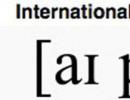How to solve a quadratic equation using a discriminant and a quarter of the discriminant. Solving quadratic equations Types of quadratic equations
Before we learn how to find the discriminant of a quadratic equation of the form ax2+bx+c=0 and how to find the roots of a given equation, we need to remember the definition of a quadratic equation. An equation that looks like ax 2 + bx + c = 0 (where a, b and c are any numbers, also remember that a ≠ 0) is a square one. We will divide all quadratic equations into three categories:
- those that have no roots;
- there is one root in the equation;
- there are two roots.
In order to determine the number of roots in the equation, we need a discriminant.
How to find the discriminant. Formula
We are given: ax 2 + bx + c = 0.
Discriminant formula: D = b 2 - 4ac.
How to find the roots of the discriminant
The number of roots is determined by the sign of the discriminant:
- D = 0, the equation has one root;
- D > 0, the equation has two roots.
The roots of a quadratic equation are found by the following formula:
X1= -b + √D/2а; X2= -b + √D/2a.
If D = 0, then you can safely use any of the presented formulas. You will get the same answer either way. And if it turns out that D > 0, then you don’t have to count anything, since the equation has no roots.
I must say that finding the discriminant is not so difficult if you know the formulas and carefully carry out the calculations. Sometimes errors occur when substituting negative numbers in the formula (you need to remember that a minus times a minus gives a plus). Be careful and everything will work out!
First, what is a quadratic equation? A quadratic equation is an equation of the form ax^2+bx+c=0, where x is a variable, a, b and c are some numbers, and a is not equal to zero.
2 step
To solve a quadratic equation, we need to know the formula for its roots, that is, for starters, the formula for the discriminant of a quadratic equation. It looks like this: D=b^2-4ac. You can derive it yourself, but usually it is not required, just remember the formula (!) You will really need it in the future. There is also a formula for the quarter of the discriminant, more about it a little later.
3 step
Let's take the equation 3x^2-24x+21=0 as an example. I will solve it in two ways.
4 step
Method 1. Discriminant.
3x^2-24x+21=0
a=3, b=-24, c=21
D=b^2-4ac
D=576-4*63=576-252=324=18^2
D>
x1.2= (-b 18)/6=42/6=7
x2=(-(-24)-18)/6=6/6=1
5 step
It's time to remember the formula for the quarter of the discriminant, which can greatly facilitate the solution of our equation =) so, here's how it looks: D1=k^2-ac (k=1/2b)
Method 2. A quarter of the Discriminant.
3x^2-24x+21=0
a=3, b=-24, c=21
k=-12
D1=k^2 – ac
D1=144-63=81=9^2
D1>0, so the equation has 2 roots
x1,2= k +/ square root of D1)/a
x1= (-(-12) +9)/3=21/3=7
x2= (-(-12) -9)/3=3/3=1
Evaluated how much easier the solution?;)
Thank you for your attention, I wish you success in your studies =)
- In our case, in the equations D and D1 were > 0 and we got 2 roots each. If there were D=0 and D1=0, then we would get one root each, and if there were D<0 и D1<0 соответственно, то у уравнений корней бы не было вовсе.
- Through the root of the discriminant (D1), only those equations can be solved in which the term b is even (!)
Quadratic equations. Discriminant. Solution, examples.
Attention!
There are additional
material in Special Section 555.
For those who strongly "not very..."
And for those who "very much...")
Types of quadratic equations
What is a quadratic equation? What does it look like? In term quadratic equation keyword is "square". It means that in the equation necessarily there must be an x squared. In addition to it, in the equation there may be (or may not be!) Just x (to the first degree) and just a number (free member). And there should not be x's in a degree greater than two.
In mathematical terms, a quadratic equation is an equation of the form:
Here a, b and c- some numbers. b and c- absolutely any, but a- anything but zero. For example:
![]()
Here a =1; b = 3; c = -4
![]()
Here a =2; b = -0,5; c = 2,2
![]()
Here a =-3; b = 6; c = -18
Well, you get the idea...
In these quadratic equations, on the left, there is full set members. x squared with coefficient a, x to the first power with coefficient b and free member of
Such quadratic equations are called complete.
What if b= 0, what will we get? We have X will disappear in the first degree. This happens from multiplying by zero.) It turns out, for example:
5x 2 -25 = 0,
2x 2 -6x=0,
-x 2 +4x=0
Etc. And if both coefficients b and c are equal to zero, then it is even simpler:
2x 2 \u003d 0,
-0.3x 2 \u003d 0
Such equations, where something is missing, are called incomplete quadratic equations. Which is quite logical.) Please note that x squared is present in all equations.
By the way why a can't be zero? And you substitute instead a zero.) The X in the square will disappear! The equation will become linear. And it's done differently...
That's all the main types of quadratic equations. Complete and incomplete.
Solution of quadratic equations.
Solution of complete quadratic equations.
Quadratic equations are easy to solve. According to formulas and clear simple rules. At the first stage, it is necessary to bring the given equation to the standard form, i.e. to the view:
If the equation is already given to you in this form, you do not need to do the first stage.) The main thing is to correctly determine all the coefficients, a, b and c.
The formula for finding the roots of a quadratic equation looks like this:

The expression under the root sign is called discriminant. But more about him below. As you can see, to find x, we use only a, b and c. Those. coefficients from the quadratic equation. Just carefully substitute the values a, b and c into this formula and count. Substitute with your signs! For example, in the equation:
![]()
a =1; b = 3; c= -4. Here we write:
Example almost solved:


This is the answer.
Everything is very simple. And what do you think, you can't go wrong? Well, yes, how...
The most common mistakes are confusion with the signs of values a, b and c. Or rather, not with their signs (where is there to be confused?), But with the substitution of negative values into the formula for calculating the roots. Here, a detailed record of the formula with specific numbers saves. If there are problems with calculations, so do it!
Suppose we need to solve the following example:
![]()
Here a = -6; b = -5; c = -1
Let's say you know that you rarely get answers the first time.
Well, don't be lazy. It will take 30 seconds to write an extra line. And the number of errors will drop sharply. So we write in detail, with all the brackets and signs:


It seems incredibly difficult to paint so carefully. But it only seems. Try it. Well, or choose. Which is better, fast, or right? Besides, I will make you happy. After a while, there will be no need to paint everything so carefully. It will work out just right. Especially if you apply practical techniques, which are described below. This evil example with a bunch of minuses will be solved easily and without errors!
But, often, quadratic equations look slightly different. For example, like this:
![]()
Did you know?) Yes! it incomplete quadratic equations.
Solution of incomplete quadratic equations.
They can also be solved by the general formula. You just need to correctly figure out what is equal here a, b and c.
Realized? In the first example a = 1; b = -4; a c? It doesn't exist at all! Well, yes, that's right. In mathematics, this means that c = 0 ! That's all. Substitute zero into the formula instead of c, and everything will work out for us. Similarly with the second example. Only zero we don't have here With, a b !
But incomplete quadratic equations can be solved much easier. Without any formulas. Consider the first incomplete equation. What can be done on the left side? You can take the X out of brackets! Let's take it out.
![]()
And what of it? And the fact that the product is equal to zero if, and only if any of the factors is equal to zero! Don't believe? Well, then come up with two non-zero numbers that, when multiplied, will give zero!
Does not work? Something...
Therefore, we can confidently write: x 1 = 0, x 2 = 4.
Everything. These will be the roots of our equation. Both fit. When substituting any of them into the original equation, we get the correct identity 0 = 0. As you can see, the solution is much simpler than the general formula. I note, by the way, which X will be the first, and which the second - it is absolutely indifferent. Easy to write in order x 1- whichever is less x 2- that which is more.
The second equation can also be easily solved. We move 9 to the right side. We get:
It remains to extract the root from 9, and that's it. Get:
![]()
also two roots . x 1 = -3, x 2 = 3.
This is how all incomplete quadratic equations are solved. Either by taking X out of brackets, or by simply transferring the number to the right, followed by extracting the root.
It is extremely difficult to confuse these methods. Simply because in the first case you will have to extract the root from X, which is somehow incomprehensible, and in the second case there is nothing to take out of brackets ...
Discriminant. Discriminant formula.
Magic word discriminant ! A rare high school student has not heard this word! The phrase “decide through the discriminant” is reassuring and reassuring. Because there is no need to wait for tricks from the discriminant! It is simple and trouble-free to use.) I remind you of the most general formula for solving any quadratic equations:

The expression under the root sign is called the discriminant. The discriminant is usually denoted by the letter D. Discriminant formula:
D = b 2 - 4ac
And what is so special about this expression? Why does it deserve a special name? What meaning of the discriminant? After all -b, or 2a in this formula they don’t specifically name ... Letters and letters.
The point is this. When solving a quadratic equation using this formula, it is possible only three cases.
1. The discriminant is positive. This means that you can extract the root from it. Whether the root is extracted well or badly is another question. It is important what is extracted in principle. Then your quadratic equation has two roots. Two different solutions.
2. The discriminant is zero. Then you have one solution. Since adding or subtracting zero in the numerator does not change anything. Strictly speaking, this is not a single root, but two identical. But, in a simplified version, it is customary to talk about one solution.
3. The discriminant is negative. A negative number does not take the square root. Well, okay. This means there are no solutions.
To be honest, with a simple solution of quadratic equations, the concept of a discriminant is not really required. We substitute the values of the coefficients in the formula, and we consider. There everything turns out by itself, and two roots, and one, and not a single one. However, when solving more complex tasks, without knowledge meaning and discriminant formula not enough. Especially - in equations with parameters. Such equations are aerobatics for the GIA and the Unified State Examination!)
So, how to solve quadratic equations through the discriminant you remembered. Or learned, which is also not bad.) You know how to correctly identify a, b and c. Do you know how carefully substitute them into the root formula and carefully count the result. Did you understand that the key word here is - carefully?
Now take note of the practical techniques that dramatically reduce the number of errors. The very ones that are due to inattention ... For which it is then painful and insulting ...
First reception
. Do not be lazy before solving a quadratic equation to bring it to a standard form. What does this mean?
Suppose, after any transformations, you get the following equation:
![]()
Do not rush to write the formula of the roots! You will almost certainly mix up the odds a, b and c. Build the example correctly. First, x squared, then without a square, then a free member. Like this:
![]()
And again, do not rush! The minus before the x squared can upset you a lot. Forgetting it is easy... Get rid of the minus. How? Yes, as taught in the previous topic! We need to multiply the whole equation by -1. We get:
![]()
And now you can safely write down the formula for the roots, calculate the discriminant and complete the example. Decide on your own. You should end up with roots 2 and -1.
Second reception. Check your roots! According to Vieta's theorem. Don't worry, I'll explain everything! Checking last thing the equation. Those. the one by which we wrote down the formula of the roots. If (as in this example) the coefficient a = 1, check the roots easily. It is enough to multiply them. You should get a free term, i.e. in our case -2. Pay attention, not 2, but -2! free member with your sign . If it didn’t work out, it means they already messed up somewhere. Look for an error.
If it worked out, you need to fold the roots. Last and final check. Should be a ratio b With opposite
sign. In our case -1+2 = +1. A coefficient b, which is before the x, is equal to -1. So, everything is correct!
It is a pity that it is so simple only for examples where x squared is pure, with a coefficient a = 1. But at least check in such equations! There will be fewer mistakes.
Reception third . If your equation has fractional coefficients, get rid of the fractions! Multiply the equation by the common denominator as described in the lesson "How to solve equations? Identity transformations". When working with fractions, errors, for some reason, climb ...
By the way, I promised an evil example with a bunch of minuses to simplify. Please! Here he is.
![]()
In order not to get confused in the minuses, we multiply the equation by -1. We get:
![]()
That's all! Deciding is fun!
So let's recap the topic.
Practical Tips:
1. Before solving, we bring the quadratic equation to the standard form, build it right.
2. If there is a negative coefficient in front of the x in the square, we eliminate it by multiplying the entire equation by -1.
3. If the coefficients are fractional, we eliminate the fractions by multiplying the entire equation by the corresponding factor.
4. If x squared is pure, the coefficient for it is equal to one, the solution can be easily checked by Vieta's theorem. Do it!
Now you can decide.)
Solve Equations:
8x 2 - 6x + 1 = 0
x 2 + 3x + 8 = 0
x 2 - 4x + 4 = 0
(x+1) 2 + x + 1 = (x+1)(x+2)



Answers (in disarray):
x 1 = 0
x 2 = 5
x 1.2 =2
x 1 = 2
x 2 \u003d -0.5
x - any number
x 1 = -3
x 2 = 3
no solutions
x 1 = 0.25
x 2 \u003d 0.5
Does everything fit? Excellent! Quadratic equations are not your headache. The first three turned out, but the rest did not? Then the problem is not in quadratic equations. The problem is in identical transformations of equations. Take a look at the link, it's helpful.
Doesn't quite work? Or does it not work at all? Then Section 555 will help you. There, all these examples are sorted by bones. Showing main errors in the solution. Of course, the application of identical transformations in solving various equations is also described. Helps a lot!
If you like this site...
By the way, I have a couple more interesting sites for you.)
You can practice solving examples and find out your level. Testing with instant verification. Learning - with interest!)
you can get acquainted with functions and derivatives.






